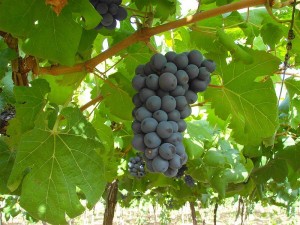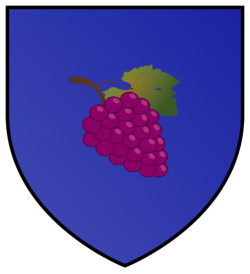 Thanks to HBO’s Game of Thrones, I’ve become engrossed by George R. R. Martin’s remarkable setting that sometimes feels more like medieval historical fiction than fantasy. It’s the first time I’ve admired a fantasy setting in years. Its gray-shaded characters and the complex society of Westeros, where most of the story takes place, brings a relatable feeling to a genre that usually throws realism to the wind.
Thanks to HBO’s Game of Thrones, I’ve become engrossed by George R. R. Martin’s remarkable setting that sometimes feels more like medieval historical fiction than fantasy. It’s the first time I’ve admired a fantasy setting in years. Its gray-shaded characters and the complex society of Westeros, where most of the story takes place, brings a relatable feeling to a genre that usually throws realism to the wind.
It helps that magic is a subtle, eerie thing in Game of Thrones. But even in small quantities, magical explanations tend to beget whole new weirdnesses that can only be solved by citing — what else? — more magic. I often feel cursed to poke at oddities that disrupt my suspension of disbelief, no matter how subtle. So here was a nitpicky question I wanted to answer: How do they have all that wine?
Game of Thrones is drenched in wine. Martin’s characters drink wine, hold wine, buy wine, pour wine, discuss wine, fantasize about wine, demand wine, and even poison each others’ wine. Some fans have even gone out of their way to make their own recipes based on wines mentioned in the books.
But for wine you need grapes, and for grapes you need something Westeros does not have: Reliably changing seasons.
The seasons in George RR Martin’s medieval fantasy are a random, unpredictable mess. They could last anywhere from a few months to a decade and there’s no way to forecast them. As the story opens, the characters are near the end of a long, ten-year summer. They also worry about the coming winter, which will cause mass starvation if it also lasts years on end. This wonky climate is an irreplaceable part of Game of Thrones. Westeros would not be remotely the same without it.
But grapevines have a life cycle that depends on regular seasons. In winter, grapevines are dormant. Come spring they sprout leaves. As summer begins, they flower and tiny little grapes appear. Throughout the summer the grapes fill up with water, sugar and acid. The grapes are finally ready for picking in early autumn, then go back to sleep in winter. This cycle is why wineries can rely on a yearly grape yield. Obviously, in Westeros, something must be different about how grapes work.
Martin has gone on record saying the random seasons are magical in nature. Fair enough. But let’s assume that Westerosi grapes are not magical. That would be too easy. Does science have any answers?
I asked University of Maryland climate scientist Antonio Busalacchi whether wine could exist in Westeros. Busalacchi is also a sommelier who studies how climate change affects the wine industry. He agreed that Westeros’ odd climate would normally be devastating for wine growers. But it turns out there is a real-world way to produce wine throughout an endless summer.
 São Francisco Valley is a wine-growing region in tropical Brazil that is only about 600 to 700 miles south of equator. Despite the constant warmth, they pump out two and sometimes three grape harvests a year. How? By depriving the vines of water and removing their leaves after every harvest, which forces them to hibernate. “They trick the plant into thinking it’s wintertime,” Busalacchi said.
São Francisco Valley is a wine-growing region in tropical Brazil that is only about 600 to 700 miles south of equator. Despite the constant warmth, they pump out two and sometimes three grape harvests a year. How? By depriving the vines of water and removing their leaves after every harvest, which forces them to hibernate. “They trick the plant into thinking it’s wintertime,” Busalacchi said.
Growing grapes in a tropical climate has a trade-off. São Francisco’s constant sunlight fills the grapes with sugar. So it’s powerfully sweet and lacks the rich complexity modern-day wine-lovers might prefer. But the people of Westeros would not care about complexity. Their food, much like food in our Middle Ages, is not riddled with processed sugar. Sugary sweet food — including what amounts to alcoholic fruit juice — would be a rare, special treat.
So, as long as there are plentiful peasants available to strip grapevine leaves by hand during their long summer seasons, the copious wine in Game of Thrones makes sense. Right?
Hold on. There’s still one problem: Winter is coming.
Busalacchi told me grapevines can survive for perhaps a year in dormancy before they die. So even a winter that lasts a little more than a year, which isn’t too horrible by Westeros standards, would wipe out nearly every grape vine and devastate the wine industry. And a decade-long period of icy weather? Forget it.
 But this might actually explain why regions in the deep south of Westeros seem to dominate the wine market. Westeros presumably has an equator too, and while the North is frigid even in the summer, most wine in the story is from the southern desert kingdom of Dorne and a southern island called The Arbor. So long as the winter in those regions stays above 10 degrees Celsius — the point at which photosynthesis stops and the plant must live off its nutrients in reserve — their grapevines could survive all winter.
But this might actually explain why regions in the deep south of Westeros seem to dominate the wine market. Westeros presumably has an equator too, and while the North is frigid even in the summer, most wine in the story is from the southern desert kingdom of Dorne and a southern island called The Arbor. So long as the winter in those regions stays above 10 degrees Celsius — the point at which photosynthesis stops and the plant must live off its nutrients in reserve — their grapevines could survive all winter.
So the answer is yes, it is scientifically possible to have all that wine, if southern winters are warm enough and if wine growers routinely prune their plants into brief comas. There are other questions we could raise. For example, would a plant with such a life cycle even naturally evolve in a climate with erratic seasons? Maybe not. But, at least for the wine as we know it, there is no magic required in Westeros.
—-
For years, Sean Treacy navigated a few newspaper jobs in the frosty northern realm of upstate New York before becoming a science writer in the D.C. area. He tends to obsess over subjects like booze in fictional settings until he finally just consults a scientist and writes about it. He has a website that features, among other things, a picture of himself in a lovely tweed jacket.
More reading: Analagous wine regions in Westeros
Credits:
Tyrion Lannister holding a cup of… what else? Publicity photo, HBO/Helen Sloan
YouTube wine video: Michael Martucci
São Francisco table grapes, plump with the juices of induced dormancy: Glauco Umbelino/Wikimedia Commons
House Redwyne lords over the wine-growing region called The Arbor. You know you take your wine seriously when you put grapes on your shield: Wikimedia Commons
Sean, I am SO GLAD you wrote this! I was very excited to see the headline of today’s LWON post, as I have been thinking about this off and on since you mentioned it in November.
This is incredibly interesting, and I’m glad you found a believable way for the grapes to exist. You make a very good point about the lack of sugar in the Westeros diet. (I hadn’t considered that.)
I must now send this to several people.
Sean, this is so geekingly awesome! I root for House Martell and now it seems that they are actually economically strong. Very strong, even. All thanks to wine.
“Unbowed. Unbent. Unbroken.”
Thanks Callie! This was ridiculously fun to write too!
Khalil: I’ve actually got yet to delve into the Martells! (I just started reading the books last month and I’m in the middle of ACoK) But from what I’ve spoiled myself on so far, they do seem pretty awesome.
What a fascinating observation regarding George R.R. Martin’s world.
I am extremely embarrassed and a little sad at just how happy this post made me.
Wouldn’t it be reasonable to assume that the life cycle of Westerosi grapes would have been evolved/domesticated in the environmental context of Westeros’s random climate and long seasons?
Whether a plant could evolve that could regularly produce fruit throughout a long summer without dormancy, but be equipped to handle a cold period for who-knows-how-long is a pretty interesting question. I don’t know the answer, but I wouldn’t be surprised if there is. An even more interesting question might be whether such a plant would resemble grapes at all. I don’t think I’ve seen anything to suggest Martin’s grapes aren’t just grapes. 🙂
You kept calling the seasons “wonky” and “unpredictable”, but for the past 10 years, there has been summer. That sounds fairly stable to me. The Maesters are able to tell when the seasons are going to change, and it happens over a course of months – from the second book to the fifth book has been a transition of summer to winter and this is over the course of a year and some months and it’s still not technically winter and it’s still warm in places. Plus they can import places from the Sunset Isles, which are extremely south and never have winter.
I think it would be safe to assume that the winter that “is coming” would not be the first one ever. Several decade-long winters are likely to destroy most of the plant life, but the remaining species would be very likely to be able to survive long winters better.
I always assumed, when reading, that the seasons still changed, but in Summer, the winter was a very mild affair, and in Winter, the summer was a mild winter. I have no basis for this belief, it’s just how it made sense at the time.
In any case, I agree with Josh Witten, it seems more likely that the life-cycle of a plant that has survived and been domesticated in that environment would not actually resemble a plant that thrives in our world. Considering how humans manage to ferment anything and everything, I prefer to go with Gene Wolfe’s conceit of using concepts we recognize to describe alien facsimiles, and assume that “wine” is made with “grapes” and drunk by “humans!”
http://lesswrong.com/lw/hq/universal_fire/
I’m gonna go with all the grapes are descended from magic infused Valyrian grapes, so no problem at all, duh.
Cathryn is right, Summer still has winter months where they get summer snows but it melts quickly, and Winter still has summer months during which they can get “false springs”.
In short, there is still variation in the temperature and weather, but a Summer year is like our regular year but with mild snowy periods up north, while a Winter year is like an Ice Age year where most of it is miserably cold and ice, but there might be a few weeks (or rarely a few months) of warm weather.
Cool article. If it helps any, being an ICe and Fire geek to embarrassing levels, I can help you get a grip on some Westerosi seasonal changes that might, MIGHT help explain a few things. First: the book is fiction. Just kidding- I hate that answer. I liked your comparison to the Brazilian method of “tricking” the vines. It’s also worth noting that Westeros has fluctuation within the seasons. For example, there are false springs and false winters. And seeing as how their stints are longers, it’s possible it’s enough to create sprouting and flowering/fruiting during these periods. But that’s not reliable, so as you say, certain stable regions are wine heavy, whereas the North is more Barley and wheat oriented (beers). I can’t recall any Northern wines being mentioned in any serious way. The only ubiquitous produce seem to be turnips, beets, and grains. Essos, the other continent on which Dany is exiled, does not seem to vocalize as prominent a seasonal discrepancy. It may be their part of the planet is more stable…in which case, Westeros could import tons of wine from the Free Cities.
Fantastic article!
Hmmmm. Is there any mention of “summer snows” happening outside of The North? The presence summer snows becomes a pretty moot point if we’re essentially just talking about something that happens in a particularly Northern climate.
Great post 🙂 Brilliant actually 🙂
Sean @ 15 – There is only the mention by the Grand Maester Pycelle to Eddard Stark while in King’s Landing that he envies the Northmen their summer snows. And at the time the North was getting them (and it was declared officially summer to autumnish in this time frame). So I would say no. The North is always refered to as special in that it breeds hard people with a different way of life, and this is mostly due to the weather and lifestyle. King’s Landing was still hot and humid at the time of Pycelle’s comment, but that is also a bit South yet. The Riverlands are between KL and the North, so they might….although they don’t have any prized vineyards either. You do have to kind of take the regions climate’s with a grain of salt when trying to decipher a comparable real region. If Dorne borders the Reach, and the Reach also stretches up to The Westerlands, I would say it is comparable to France- you get some chilly areas, and some French riviera, too. The Riverlands, maybe more of an England, and the North definitely being comparable to Northern Europe, like Scandanavia. Dorne is like Southern Italy or even Morocco.
Large bodies of water store heat in warm periods and release it in cold periods. During the summer, areas near a large body of water tend to be more mild than inland areas. The water absorbs the heat making the climate more mild in the summer near the coast (or on a lake or river). In turn water will slowly release this energy during the winter making coastal areas warmer. This might explain why they might be able to cultivate vines in The Arbor (an island)and Durne (perhaps coastal?). There is an area in Portugal where they bury there vines in the sand to protect them from the elements. Pruning techniques like albarello or pergola can create shade to protect the grapes in hot climates.
The South, especially the Reach and Dorne, don’t get winter in the same way the North does.
Hey Sean, I felt compelled to do a small contribution to your lovely article. It must be noted that not all wine grape varieties can be grown in the Sao Francisco valley. I am Brazilian and I happen to travel over there often. They have lots of Muscat, some Syrah, few Cabernet, Chardonnay and Sauvignon. There are no Pinot, Malbec or Carmenere whatsoever. I wonder if Dornish wine is better because their breeders have managed to come up with better varieties adapted to their warmer climate or because their vintners are experts in blending all these sweet varieties. On the other people medieval folk might not be as picky about their wines as we are.
Thanks for sharing Gustavo. They do seem to have a lot of variation in ASoIaF. Mulled wine, spiced wine, strong wine. My hunch has been they usually add something to it after its made, but they might have some other tricks up their sleeves.